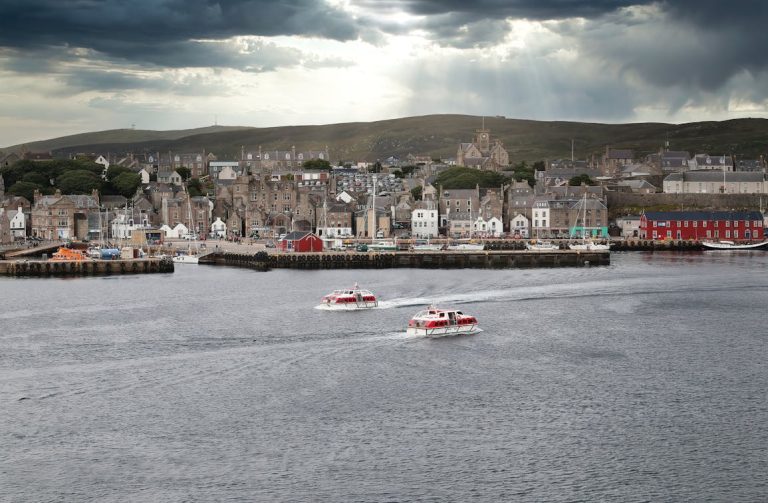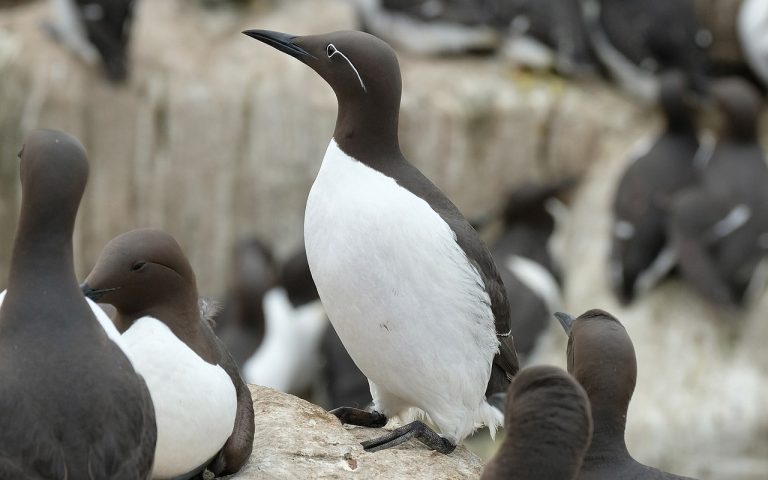The Shetland Islands
The Shetland Islands, a remote and rugged archipelago located northeast of mainland Scotland, are known for their dramatic coastlines, ancient Norse heritage, and vibrant wildlife, including puffins, seals, and orcas.
Guillemots
Guillemots are a common sight on the Orkney and Shetland islands, particularly during the breeding season when they form large colonies on the island's sea cliffs.
Find out more
Shetland Pony
he Shetland pony is a small, sturdy horse breed originating from the Shetland Islands
FInd out more
Fair Isle
Fair Isle is a small, isolated island situated about halfway between mainland Shetland and Orkney, making it one of the most remote inhabited islands in the United Kingdom.
find out more
Lerwick
Lerwick, the capital and main port of the Shetland Islands is a vibrant town known for its unique blend of Scottish and Norse heritage.
find out more
The Shetland Islands, an archipelago of around 100 islands located about 170 kilometres (105 miles) northeast of mainland Scotland, are Scotland’s northernmost point. These islands, steeped in history, natural beauty, and unique cultural heritage, are a destination for those seeking adventure and an escape to rugged, unspoiled landscapes. Here’s a full overview:
Geography and Climate
- Location: Situated between the North Sea and the Atlantic Ocean, the Shetland Islands lie closer to Norway than to mainland Scotland.
- Islands: Out of the 100 islands, only 16 are inhabited, with the largest, Mainland, housing the majority of the population.
- Climate: The islands experience a maritime climate, characterised by mild, wet winters and cool, relatively dry summers. The constant sea breeze keeps temperatures moderate, but the weather is often windy and unpredictable.
Natural Beauty and Wildlife
- Landscape: The Shetlands feature stunning coastlines, sheer cliffs, sandy beaches, rolling moors, and expansive peat bogs.
- Wildlife: These islands are a haven for wildlife enthusiasts. Shetland is renowned for its seabird colonies, including puffins, gannets, and guillemots. Marine life is abundant, with seals, otters, and whales commonly spotted along the shores. The islands are also famous for the native Shetland pony, a hardy breed adapted to the harsh conditions.
History and Heritage
- Early Inhabitants: Archaeological evidence suggests human presence on the islands for over 5,000 years, with remnants of Neolithic settlements.
- Norse Influence: In the 9th century, Norse settlers established the islands as a part of the Viking Age’s North Atlantic trade routes. This Norse influence is deeply ingrained in Shetland’s culture, dialect, and traditions.
- Annexation to Scotland: Shetland was pledged to Scotland in 1469 as part of a dowry for a Danish princess and has been part of Scotland ever since, though its Norse heritage remains significant.
Culture and Festivals
- Up Helly Aa: Shetland hosts one of Scotland’s most unique festivals, Up Helly Aa, a fire festival held in January that celebrates Shetland’s Viking heritage. Locals dress as Viking warriors and parade through Lerwick, the capital, culminating in the burning of a Viking galley.
- Dialects and Music: The Shetland dialect includes many Norse words, and traditional fiddle music remains an important part of Shetland’s cultural fabric, with annual festivals celebrating folk and traditional music.
- Crafts: Shetland is famed for its wool and intricate knitting patterns, particularly Fair Isle knitting, which is still practised and celebrated in the local community.
Economy and Tourism
- Fishing and Agriculture: Fishing remains a central part of the economy, alongside sheep farming, which supports Shetland’s thriving wool industry.
- Oil and Gas: The discovery of oil in the North Sea has brought economic growth to the region, particularly through the Sullom Voe oil terminal.
- Tourism: Tourists are drawn to Shetland for its remote beauty, wildlife, and rich cultural history. The islands offer outdoor activities such as birdwatching, hiking, and exploring ancient ruins and lighthouses. Sustainable tourism is encouraged to preserve the islands’ pristine environments.
Accessibility
- Getting There: Shetland is accessible by flights from mainland Scotland or by ferry from Aberdeen, which is an overnight journey.
- Getting Around: Once on the islands, travel is largely by car or local buses. Ferries connect the larger islands, making it easier for visitors to explore Shetland’s varied landscapes.
The Shetland Islands are a truly unique part of Scotland, blending ancient Norse heritage with Scottish identity, all set against some of the most beautiful and untouched landscapes in Europe.
Shetland Blog ...
Looking for some extra travel tips & tricks?
Why not check out my travel resources or get in touch with your experiences





